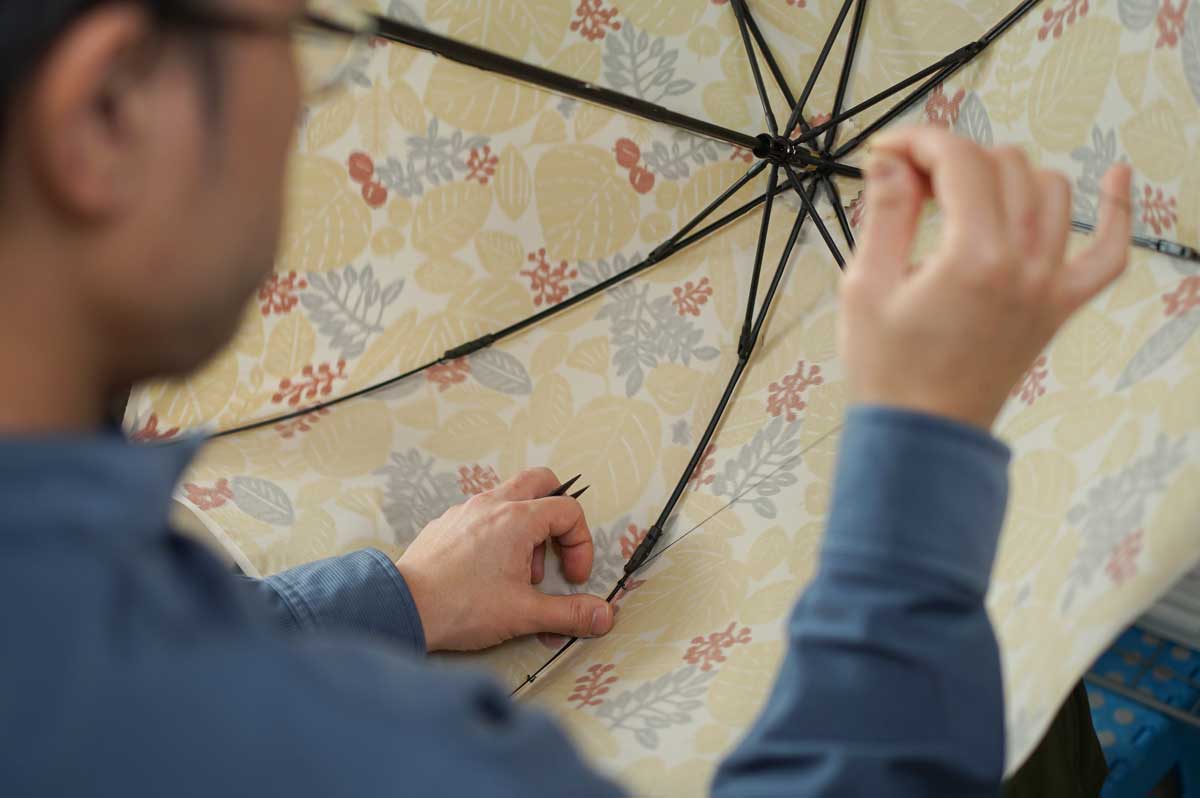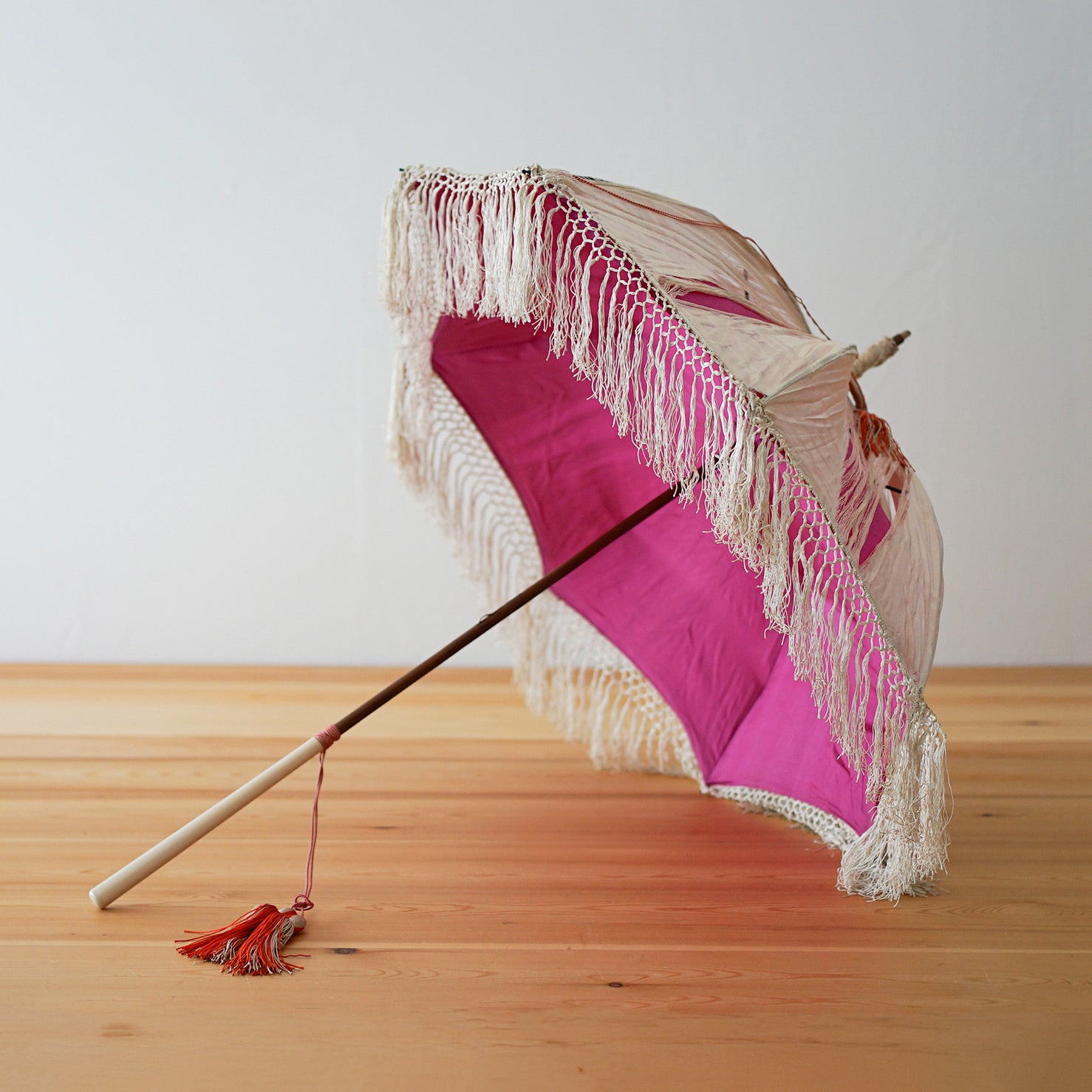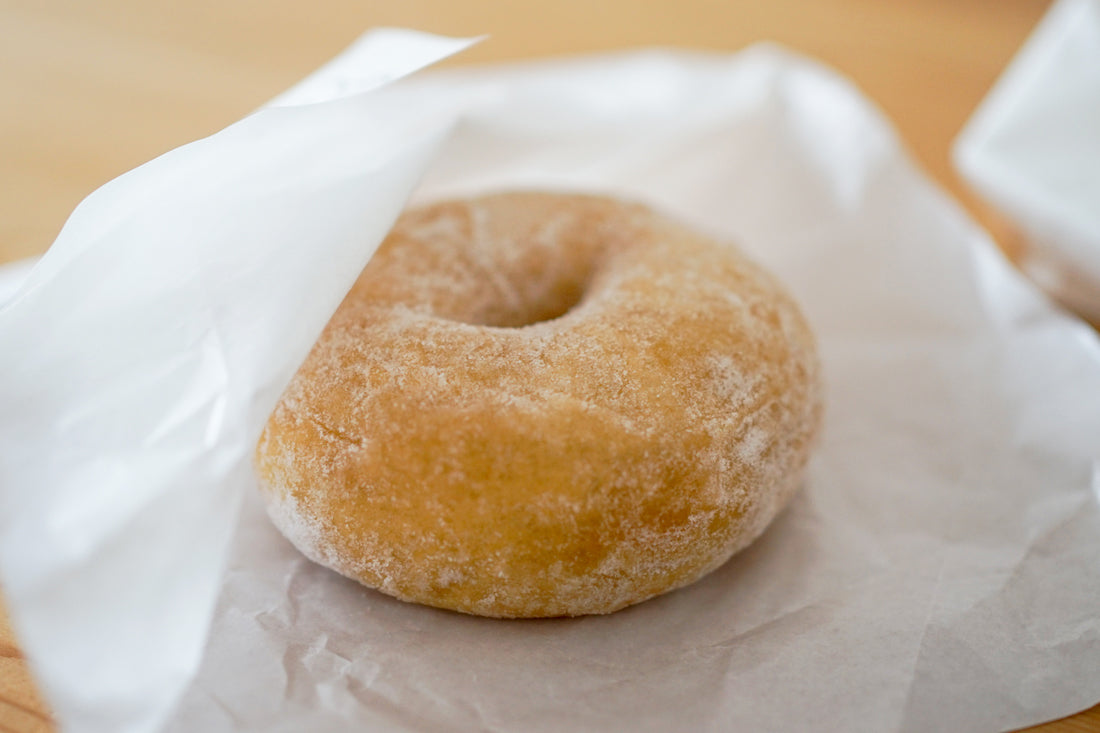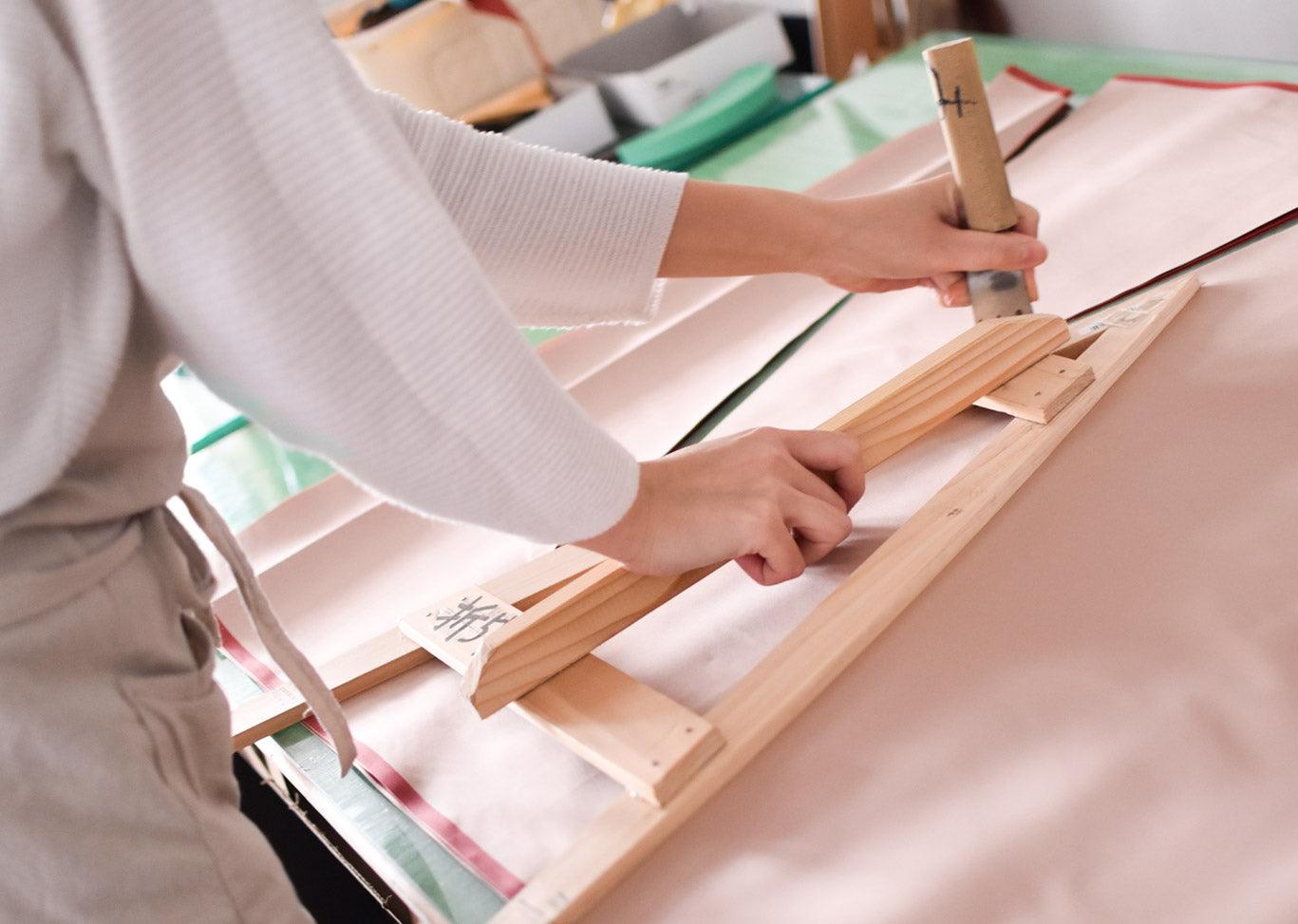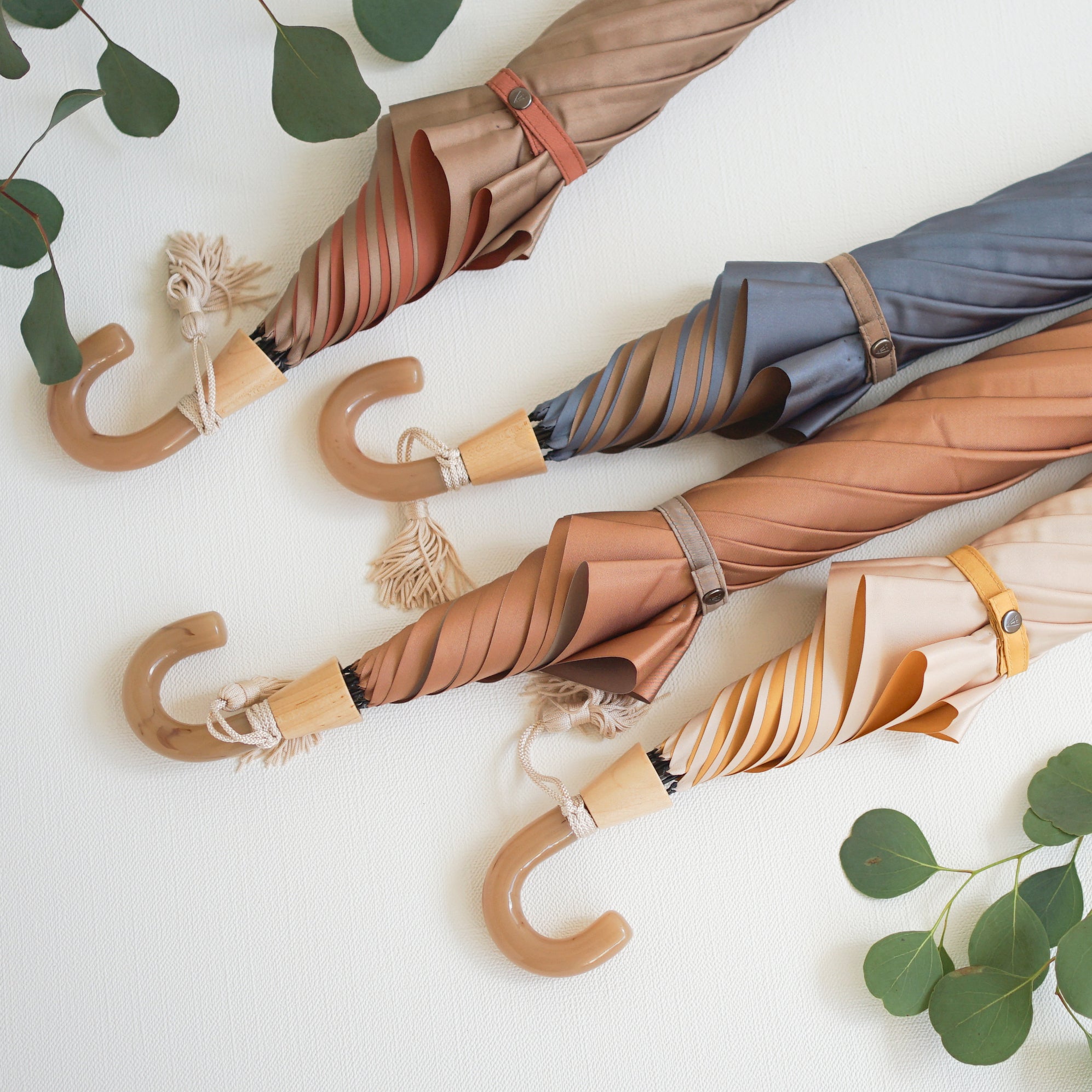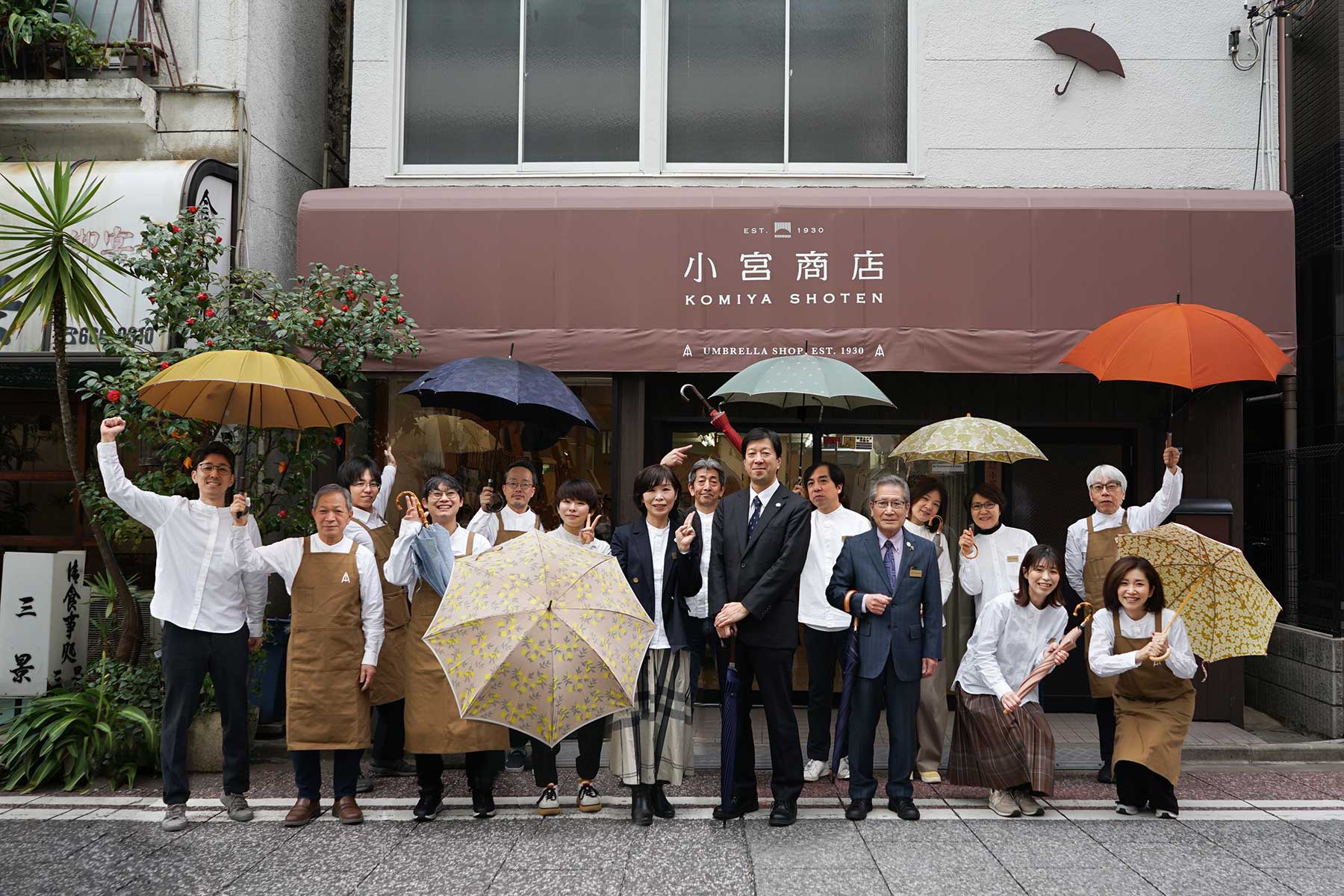I'm Tanaka, an umbrella craftsman at our workshop.
In the previous installment of the series "The Things That Create Manufacturing," we will be focusing on the tailoring and work required to process umbrellas.
The theme is "events" rather than "things."
I have also changed the series title to "Making things."
Well, this time we'll be talking about the names of the parts of an umbrella that we use every day.
As mentioned in the first article, "Things that Create Manufacturing," umbrellas use a part called a top paper.
Tengami is the gear-shaped piece of fabric that can be seen at the top when viewed from the inside.

In addition, although it cannot be seen from the outside, small chip-like dough called tenshita is sandwiched on top of the tengami paper.
Because this is an area that is highly susceptible to water leakage, it has been thoroughly reinforced to ensure you can enjoy it for a long time.
The materials used are scraps, and thanks to the wisdom of our ancestors that has been passed down from generation to generation, nothing is wasted.
By the way, I have always wondered what the "ten" in "tenshi" and "tenka" means, and recently I had an opportunity to think about it.

Tenshi and tenka set on the bone.
Tenka is a square chip of dough.
This is the stage where the cover is about to be placed on, a sight you don't usually see.
Umbrella covers are made by sewing together triangular pieces of fabric called "links." The sewing process involves dropping the needle at the top of the triangle and running a stitch down to the base.

This is a task that requires a very high level of skill as it requires the use of a special sewing machine specifically designed for umbrella processing, and in addition to accuracy, a certain speed is also required to ensure stability of the stitching.
This is a process that requires skill and dexterity, truly the skill of a craftsman.
Whether or not you can produce beautiful stitches depends in part on the accuracy of the needle drop.
One way to check whether a cover has been sewn properly is to see if the beginning of the stitching is neatly put together.
If you drop the needle firmly in the same place, the points of the triangles woven inside will create a beautiful star shape, as shown in the photo below.

Don't you think this star resembles the sun? I remember seeing it in illustrations in old European books. Tenka and Tenshi are both parts that are set under the star depicted in this collection.
The jagged top paper itself can be likened to a star or the sun (or at least that's what I've thought of it up until now), but if that's the case, the question remains as to why the "tenka" on top of the top paper is "under"...
However, if the unity of the cover is like heaven, then calling it Tenka does not seem strange.
As the word "Otenodosama" (sun) suggests, I believe that the sky is the sun, not the stars.
The moment the "shape" and "words" that you have created come into contact, even routine work takes on a new depth.
The world of imagination that expands just by slightly changing your perspective is a joy that only creators can experience.
I realized that working with your hands is a creative occupation, even if it may seem dull at first glance.
If you pay attention to the form that the words you use every day in your daily life take, you may be surprised to discover something new.


